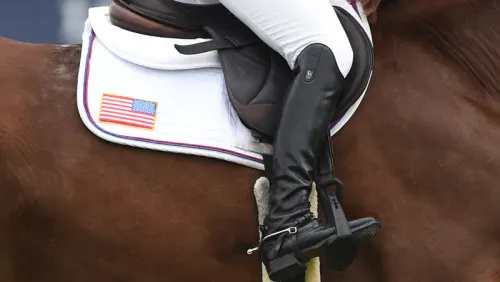Reported spread of screwworm, a devastating and potentially deadly pest, into Mexico has caused the U.S. Department of Agriculture to restrict movement of horses between Mexico and the U.S., and the U.S. Federation to issue an alert and warning about the infestation.
“Screwworm has expanded uncontrollably in the last several months from South America and now into Mexico,” USEF said in a Friday press release. “If not controlled the screwworm flies will continue to move north into the United States. There is the additional risk illegal horse entry into the United States could bring in screwworm.
“If screwworm were to enter and spread in the United States, it would have significant impact on you and your equine athlete. Depending on the severity of the incursion, shows, and movement of horses may be halted. Thus, it is critical for every horse owner to be vigilant and take steps to prevent screwworm incursion and spread.”
Screwworm is endemic in South America as well as Cuba, Haiti and the Dominican Republic, according to the U.S. Animal and Plant Health Inspection Service, and since 2006 the U.S. and Panama have maintained a barrier zone in eastern Panama intended to prevent screwworm from spreading further north into Central and North America. “However, since 2023, cases have been increasing in number and spreading north from Panama to Costa Rica, Nicaragua, Honduras, Guatemala, and now Mexico,” APHIS reported earlier this month, noting the Mexico alerted APHIS to its first positive screwworm case on Nov. 22.
“New World screwworm (NWS, Cochliomyia hominivorax) is a devastating pest of livestock that is not currently present in the United States,” according to the APHIS report. “NWS maggots can infest livestock and other warm-blooded animals, including people. They most often enter an animal through an open wound or mucous membranes and feed on the animal’s living flesh. NWS larvae do not feed on dead tissue or carrion. Untreated screwworm infestations can be fatal.”
ADVERTISEMENT
In its Friday statement, USEF encouraged horse owners to be vigilant for any signs of screwworm infestation: “Daily inspection of all wounds for any signs of larvae is critical. If larvae (maggots) are detected in a wound, contact your private practitioner immediately so they can perform an assessment of the type of larvae. If screwworm is suspected samples will be collected for confirmation.”
Should screwworm be diagnosed, the animal must be quarantined until wound care, larvicides and insecticidal treatments have successfully eliminated any screwworm larvae.
Any livestock, including horses, traveling to the U.S. from a screwworm-affected country must be pre-treated with ivermectin and then remain in quarantine for seven days, pending a screwworm examination that requires sedation for the safe, thorough examination of the sheaths of stallions and geldings, the USEF release explained.
For more information on screwworm, visit the APHIS and USEF websites.














